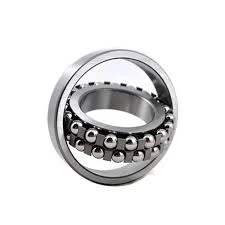
Dec . 23, 2024 19:41 Back to list
Thrust Ball Bearing Dimensions and Specifications Guide for Various Applications
Understanding Thrust Ball Bearing Size Charts
Thrust ball bearings are crucial components in various machinery, providing support for axial loads while allowing smooth movement between parts. Their design consists of two grooved rings and a set of balls that fit between them, functioning in a similar manner to traditional bearings but specifically tailored for axial (thrust) loads. Understanding the sizes and specifications from thrust ball bearing size charts is essential for choosing the right bearing for any application.
What is a Thrust Ball Bearing?
Thrust ball bearings are specialized for axial loads, where forces are applied along the axis of the shaft. They are often used in applications such as automotive transmissions, heavily loaded rotary tables, and other machinery requiring precise rotational movements. Unlike radial ball bearings, which can handle both radial and axial loads, thrust ball bearings are strictly limited to axial thrust loads and come in different designs depending on the needs of the application.
Importance of Size Charts
Thrust ball bearing size charts provide critical information necessary for engineers, maintenance professionals, and designers to choose the appropriate bearing for their specific application. These charts typically include dimensions such as the inner diameter (ID), outer diameter (OD), width, and load ratings.
1. Inner Diameter (ID) This measurement indicates the size of the shaft the bearing will fit onto. It’s crucial to match the ID of the bearing to the shaft diameter for optimal performance and safety.
2. Outer Diameter (OD) The outer diameter determines the size of the housing or casing that holds the bearing. Inadequate sizing can lead to mechanical failures or inefficient operation.
3. Width The width measurement affects the bearing's load capacity and its ability to handle thrust loads. A broader bearing can often accommodate higher loads.
thrust ball bearing size chart

4. Load Ratings These ratings indicate the maximum load a bearing can handle before failure. They are expressed in both static and dynamic terms—static load ratings pertain to when the bearing is stationary, whereas dynamic load ratings refer to when the bearing is in operation.
How to Use a Size Chart
Using a thrust ball bearing size chart is straightforward. First, identify the application requirements, including load and space constraints. Next, refer to the size chart for different bearing types and their specifications. Look for the critical measurements (ID, OD, width) and ensure that the bearing you select can handle the expected loads.
Additionally, consider the material and lubrication options, as these factors can significantly influence performance and longevity. Most charts will also note the bearing's material, which can range from standard steel to various types of coated or composite materials designed to resist corrosion and wear.
Factors Influencing Selection
When selecting a thrust ball bearing, several factors must be taken into account beyond the size. The operational environment—such as exposure to dust, moisture, and extreme temperatures—can affect a bearing's performance. Additionally, the speed of operation should be factored in, as high-speed applications require bearings designed to minimize friction and heat generation.
Lastly, it's essential to consider the manufacturer's reputation and any available warranty or service options, as the quality of a bearing can drastically affect overall machine performance.
Conclusion
Thrust ball bearing size charts are invaluable tools when selecting the appropriate bearing for an application. By understanding the fundamental measurements and load ratings, one can make informed decisions that enhance machine efficiency and reliability. Whether for industrial machinery or automotive applications, correctly sizing thrust ball bearings is essential to ensuring optimal performance and longevity. Therefore, always refer to reliable size charts and consult with bearing specialists when in doubt.
Latest news
-
Premium Deep Groove Ball Bearings | High Speed & Reliability
NewsAug.29,2025
-
Durable Scaffolding Clamps - Secure & Reliable Tube Connectors
NewsAug.28,2025
-
Common Failures in Thrust Ball Bearings and Solutions
NewsAug.22,2025
-
How Tapered Roller Bearings Can Take Shock Loads
NewsAug.22,2025
-
Angular Bearings in High-Precision Spindles
NewsAug.22,2025
-
The Impact of Misalignment on Cylindrical Roller Bearing Performance
NewsAug.22,2025
